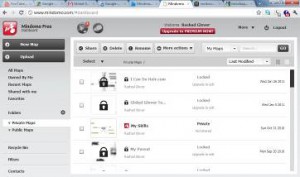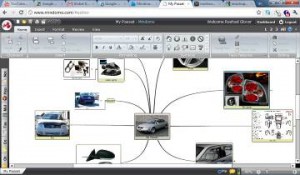Mind-mapping and Wire-framing Your Idea
My father always used to say, “Nothing comes to a sleeping man but a dream”. I always took that as you need to “get up get out and do something” (Macy Gray), even if you don’t have the money to do it. A popular hip-hop term that’s commonly used is the word “sleeping”. Put in a sentence it’s used as follows, don’t get caught sleepin’. Unfortunately, most people don’t take this advice. Instead, they sit and pity themselves because they do not have the resources to get something done, never touching their pen to the paper.
Wire-framing is a term normally used for someone who lays out a website or program so they can see its functionality in advance. Since I was a child I have always been a fan of sketching out my ideas and showing them to my family and friends so that they can critique them before the public does. It doesn’t take much to wire-frame out your dream website, program or even building layout. All you need is paper, a glue stick, black marker, color pencils and scissors. That’s it.
Also, you might want to draw out what you want on 8.5”x11.5” white sheet of paper then cut out the elements you have drawn. Let’s say I want to draw a videobox that looks like YouTube’s video box, I would draw it out then cut it out. Or, depending on your how many videoboxes you need, you may want to photo copy them, paste them on a single sheet of paper, and photo copy them again. This is how I used to do it back in the day.
Now I use software to layout my ideas. One of my favorite wire-framing software applications to work with is called Lovely Charts. Lovely Charts allows you to lay out your ideas via web browser and save them to your LovelyCharts.com account.
I’m not going to go much into each software package, I just want to make you aware of what’s out there. Mindomo.com is another application I have used for some time now and have laid out many projects within the past. It is by far one of the coolest pieces of software I have ever used. It allows you to lay out your ideas and then add video clips, sound and hyperlinks within the chart. I absolutely cannot express how great this software is! However, there is a catch, you can only create seven maps for free. If you are an inventor or super-nerd like I am you can easily create more than seven maps. If you just create one for work and one for your hobby (keeping it simple), seven maps should be more than enough.
Once you log into your Mindomo.com account one of the first things you notice is the list of maps or test maps that are offered to you. Pictured below is what the inside of my personal Mindomo account looks like.
It’s best to keep most of your maps private. If someone accesses your account and sees what you have been working on, they will have the roadmap to all of your ideas. So make sure you keep them private.
I’ll use the parts I want to order for a Volkswagen Passat as an example of mind-mapping using this program. A lot of people choose to compile a list of components, attaching links to their website or address where they can be purchased. I however, chose to create a mind-map.
I didn’t want my little VW to get too ghetto so I copied the image or source link by right clicking on the image of the product I was interested in. The browser then provides a list of options. Select the option “copy image URL”. You then paste them in the image boxes and you’re on your way


 Rashad Glover
Rashad Glover



